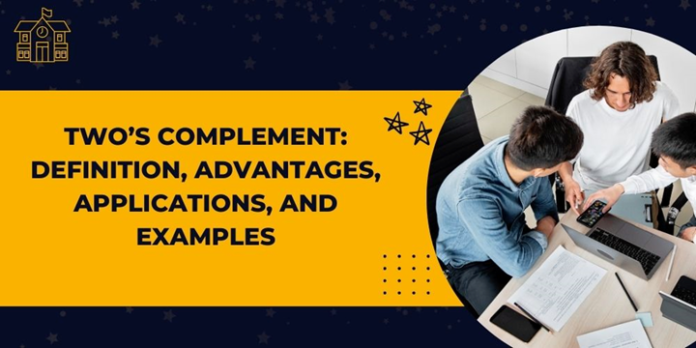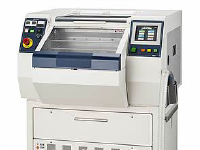
In the world of digital computing, numbers are the building blocks of all operations. Computers perform countless calculations every second, from simple arithmetic to complex algorithms. To represent and manipulate these numbers effectively, computer systems rely on various numerical systems, one of which is the two’s complement.
In this article, we will delve into an important concept of two’s complement. We will describe its definition, advantages, and applications. We will also provide examples of the two’s complement system that will assist in understanding this concept precisely.
Defining Two’s Complement:
A 2’s complement is a binary representation pattern (0 & 1) used to represent both negative and positive integers in computers (that are digital). This binary method is usually used in computer systems to represent numerous data types, including integers.
- Representing positive numbers in binary is relatively straightforward
- Representing negative numbers requires a special approach, for which two’s complement is essential.
It allows for the whole representation and manipulation of signed integers, simplifying arithmetic operations such as addition and subtraction. In 2’s complement, the leftmost bit serves as the sign bit, with 0 indicating positive numbers and 1 for negative numbers.
In order to find 2s complement of a binary number, one must invert all the bits of the number and then add 1 to the result. This process changes the sign of the number, making it ready for arithmetic operations with both positive and negative integers.
Note: If the result of an arithmetic operation cannot be defined by using the provided number of bits, then overflow occurs.
Advantages of Two’s Complement
Some advantages of the two’s complement are:
- Simplicity of Arithmetic: One of the primary benefits of two’s complement is that addition and subtraction of signed integers can be performed using the same logic as unsigned integers, simplifying the hardware design for arithmetic operations.
- No Special Cases: In two’s complement, there are no special cases for negative numbers. Negative values are represented consistently with the same set of rules used for positive values.
- Range: Two’s complement allows for efficient representation of a wide range of values using a fixed number of bits. For example, with 8 bits, you can represent integers from -128 to 127.
- Efficient Hardware: Hardware implementations of two’s complement arithmetic are often more straightforward and faster than other signed number representations.
Applications of Two’s Complement:
Two’s complement plays a crucial role in various aspects of computer science and digital electronics. Some significant applications of the two’s complement are:
| Application in | Explanation |
| Signed Integers Representation | Two’s complement is widely used to represent both positive and negative integers in computer systems. It simplifies arithmetic operations on signed numbers, as addition and subtraction can be performed using the same hardware. |
| Memory Storage | In computer systems, signed integers are stored in memory using two’s complement in the form of binary format, ensuring efficient use of memory space. |
| Arithmetic Operations | Two’s complement simplifies addition and subtraction operations. The rules for adding and subtracting signed numbers in two’s complement form are the same as for unsigned numbers, making hardware design and software development more straightforward. |
| Fixed-Point and Floating-Point Representations | Two’s complement is essential for representing numbers in fixed-point and floating-point formats. These formats are used in various applications, such as scientific calculations and graphics processing. |
| Digital Signal Processing | In fields like signal processing and audio/video encoding, two’s complement is used extensively to perform mathematical operations on digital signals. Its efficiency in handling positive and negative values is crucial in these applications. |
Examples of 2s Complement
Let’s explore some examples to explain how to find two’s complement.
Example 1:
Add two binary numbers, A = 1010 and B = 1101, in the form of two’s complement.
Solution:
Step 1: Given data
A = 1010, B = 1101
Step 2: Adding the numbers as they’re unsigned:
1010
+ 1101
10111
Step 3: Discard the carry-out (overflow). In this case, it is the leftmost bit (LMB).
Step 4: By observing the result that is 0111.
Since the LMB bit is 0, this is a + ve number.
So, 1010 (two’s complement) + 1101 (two’s complement) = 0111 (two’s complement), which represents 7 in decimal notation.
Example 2:
Subtract two binary numbers, A = 1001 and B = 1101 in the form of two’s complement.
Solution:
Step 1: Given data
A = 1001, B = 1101
Now, negate the second number (B) to find its two’s complement:
B = 1101
Negating B:
0010
Step 2: By adding the numbers as they’re unsigned, using the negated B:
1001
+ 0010
10111
Step 3: Discard the carry-out (overflow). In this case, it is the LMB.
Step 4: By observing the result that is 0111.
Since the LMB bit is 0, this is a + ve number.
So, 1001 (two’s complement) – 1101 (two’s complement) = 0111 (two’s complement), which represents 7 in decimal notation.
Example 3: Overflow:
Suppose A = 0111 and B = 0011 both are in two’s complement form, add them.
Solution:
Step 1: Given data
A = 0111, B = 0011
Step 2: Adding the numbers as if they were unsigned:
0111
+ 0011
1010
Step 3: Discard the carry-out (overflow). In this case, it is the LMB i.e. 1.
Step 4: By observing the result that is 010 (two’s complement),
which represents – 2 in decimal notation.
However, the correct answer is 6, not -2. This is an example of overflow in two’s complement arithmetic, where the result exceeds the representable range.
Wrap Up:
Two’s complement is a fundamental concept in computer science that simplifies the representation and manipulation of signed integers. In this article, we have addressed the concept of the two’s complement. We elaborated on its definition, advantages, and significant applications.
In the last section, we solved some examples. Hopefully, by reading and apprehending this article you will be able to tackle the problems related to two’s complement.


















